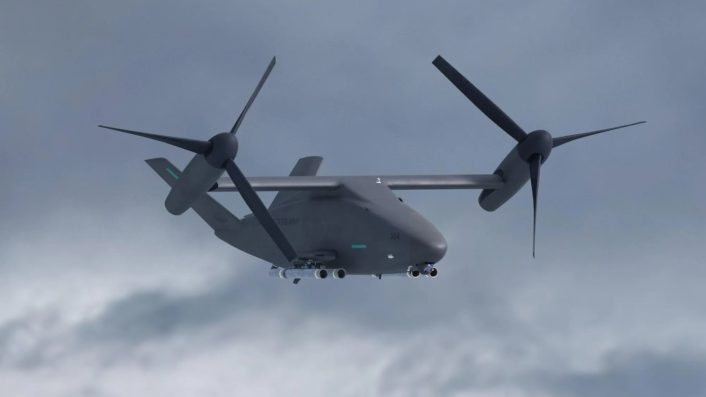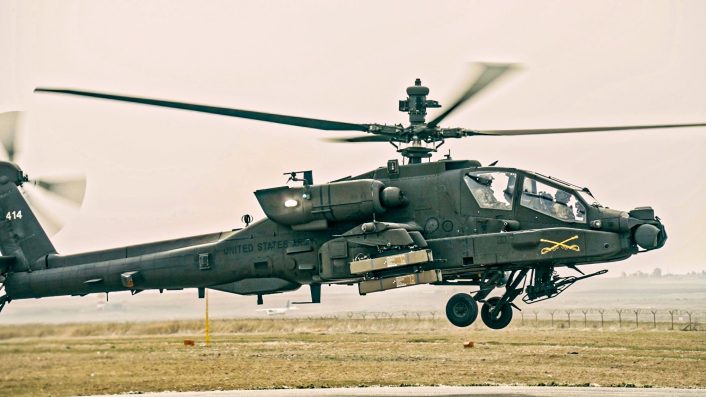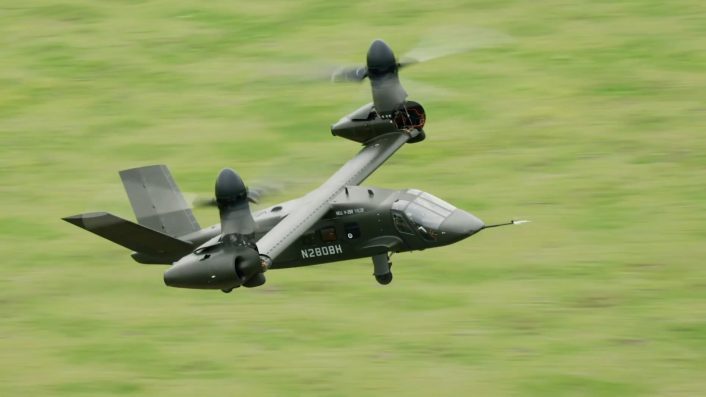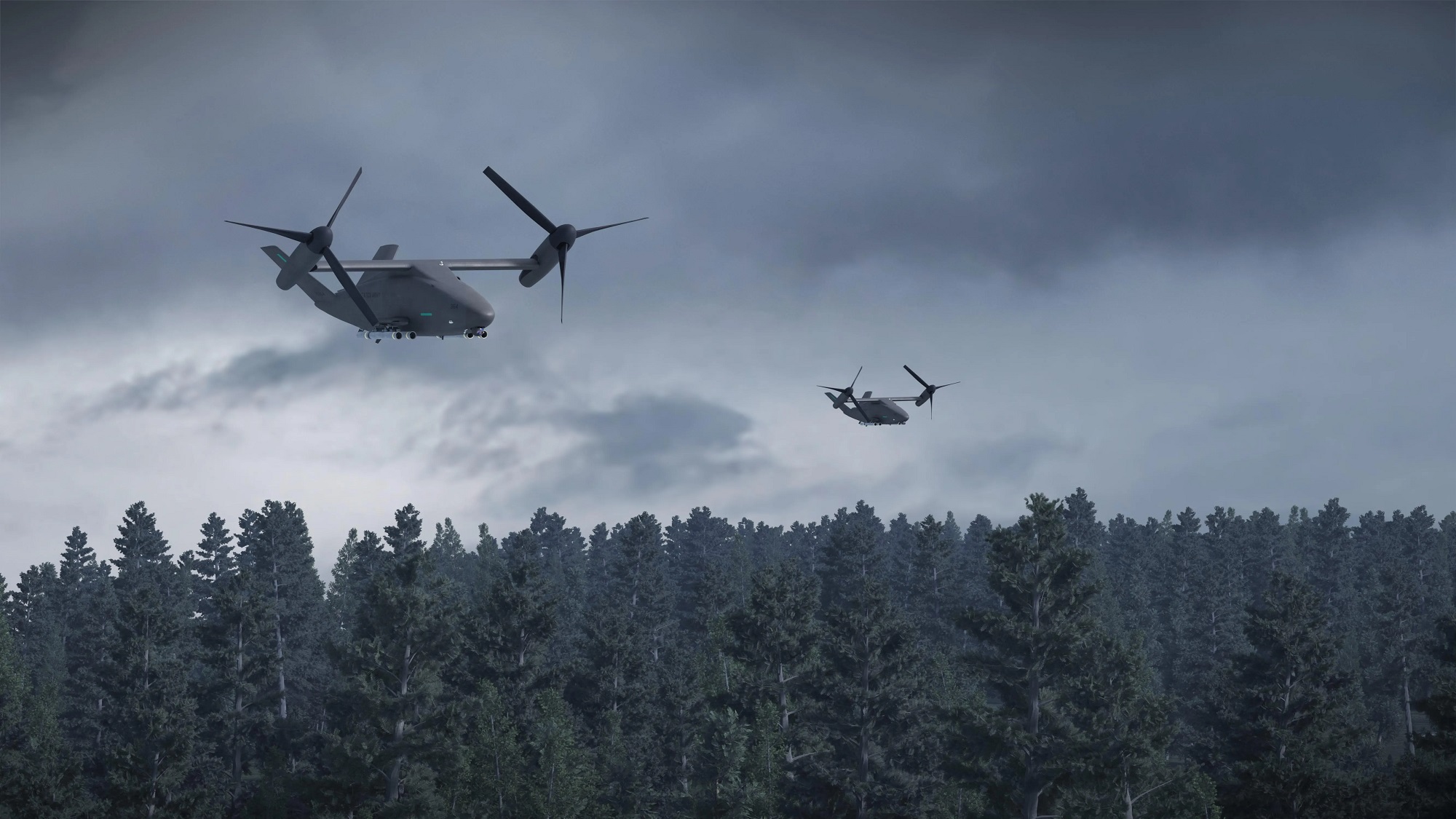Boeing introduced its new Collaborative Transformational Rotorcraft, a modular tiltrotor drone designed to team with Army helicopters.
Boeing has unveiled a new large-scale unmanned aircraft concept, dubbed the Collaborative Transformational Rotorcraft (CxR). The new concept was presented during the Association of the U.S. Army (AUSA) 2025 Annual Meeting in Washington, D.C., on Oct. 13, 2025.
According to Aviation Week, the 5,000–7,000 lb CxR concept features a single turboshaft engine driving two tilting prop-rotors, capable of reaching speeds between 200 and 250 knots. This configuration makes it the largest unmanned aerial system proposed for the Army since the MQ-1C Gray Eagle.
“It’ll be a tiltrotor with two proprotors and a gas turbine engine,” said Chris Speights, chief engineer of Boeing’s Vertical Lift division. “We believe that that’s going to provide the most mature, rapid ability to field.”
The CxR is a modular, multi-mission, autonomous tiltrotor platform that Boeing envisions as part of a broader family of unmanned systems. This family also includes a potential, logistics-focused variant called Collaborative Logistics Rotorcraft (CLR), which would serve as a high-speed cargo and resupply platform alongside the CH-47 Chinook.
The CxR is expected to support strike, reconnaissance, and collaborative operations alongside existing crewed platforms such as the AH-64E Apache. Breaking Defense quoted Speights, who said the drone would “carry the payloads that are relevant for Apache types of missions.”

Modular Design for Strike and Logistics Roles
The modular CxR concept is designed around a common core fuselage and propulsion system, enabling the installation of payloads for multiple mission-specific configurations. The combat variant could carry between 1,000 and 2,000 pounds of weapons and sensors, or act as a “mothership” for launched effects which can be used to recon, jam, or strike targets ahead of manned formations.
In contrast, the CLR logistics version replaces the payload bay with a modular cargo fuselage designed for medium- and heavy-lift resupply in contested environments. Both airframes are intended to be expeditionary, deployable aboard C-130 Hercules transport aircraft, and quickly reconfigured in the field.
“We’re working through operational analysis to fine-tune the exact requirements and what we believe the right solution is for the customer,” Speights told Aviation Week.
Collaborative Wingman for Apache and Beyond
The CxR would act in a role very similar to the U.S. Air Force’s Collaborative Combat Aircraft. In fact, as The War Zone reported, Speights said “the idea is that the CxR is a modular core that we can adapt for things like a loyal wingman, collaborative rotorcraft, that would partner with an aircraft like the Apache or even the Little Bird or whatever else you may have.”


The Army’s Manned-Unmanned Teaming-Extended (MUMT-X) program already allows Apache crews to control MQ-1C Gray Eagles and RQ-7B Shadows directly. Boeing plans to leverage this capability for the CxR, integrating it seamlessly through the Apache’s open-architecture mission system (MOSA).
This would provide multiple advantages, including a greater situational awareness. “It would create a larger sensor volume than what smaller launched effects would see, and it will have the speed and endurance that help meet the needs of the mission, both today and in the future,” Speights said.
The War Zone further reported that Boeing’s engineers also see the CxR complementing the MV-75 tiltrotor assault aircraft, the Army’s next-generation platform expected to partially replace the UH-60 Black Hawk. The CxR’s speed range of 200–250 knots would make it compatible for collaborative assault missions.
Leveraging Tiltrotor Experience
The CxR’s design draws heavily on Boeing’s experience with the V-22 Osprey, jointly developed with Bell. Lessons learned from the Osprey’s complex control mode transitions are being directly applied to the new drone.


“We really want to leverage and lean on that, because there’s a lot of maturity and capability there,” Speights said in Breaking Defense’s report. “That’s what we see adding value to this collaborative requirement.”
The use of a gas-turbine powerplant also reflects Boeing’s choice for mature, field-proven propulsion technology, though hybrid or electric systems may be considered in future iterations. This choice would help to speed up the fielding of the system.


